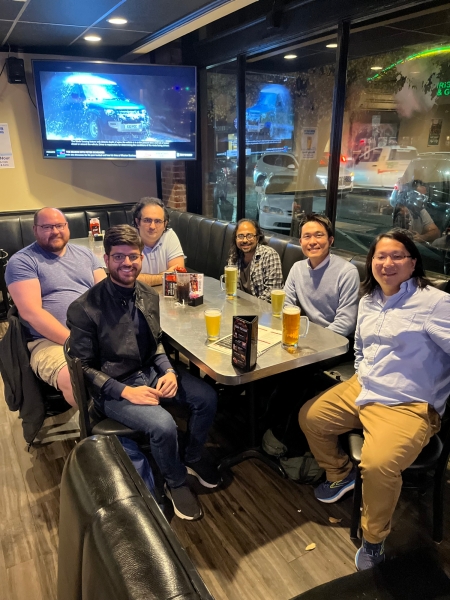Title: "Generalized Global Symmetries and Nonperturbative Quantum Flavodynamics"
Abstract: Generalized global symmetries are present in theories of particle physics, and understanding their structure can give insight into these theories and UV completions thereof. We will identify noninvertible chiral symmetries in certain flavorful Z' extensions of the Standard Model, and our understanding of generalized symmetry breaking will lead us to short-distance theories of gauged non-Abelian flavor where nonperturbative effects can resolve important naturalness questions. For the leptons we will find naturally exponentially small Dirac neutrino masses, and in the quark sector we will construct a massless down-type quarks solution to strong CP in color-flavor unification. Intriguingly, the fact that we have three generations of fermions plays a crucial role in the existence of these noninvertible symmetries.
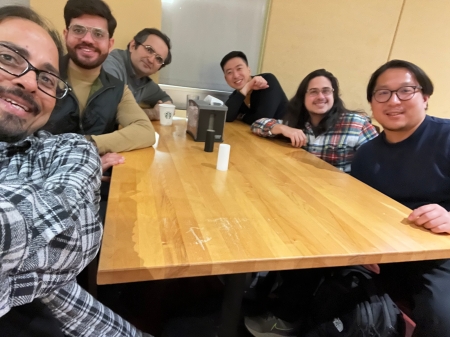
Title: "Observable CMB B-Modes from Cosmological Phase Transitions"
Abstract: A B-mode polarization signal in the cosmic microwave background (CMB) is widely regarded as smoking gun evidence for gravitational waves produced during inflation. In this talk, I demonstrate that tensor perturbations from a cosmological phase transition can produce a B-mode signal whose strength rivals that from inflationary predictions across a range of observable scales. Although phase transitions arise from sub-horizon physics, they nevertheless exhibit a white noise power spectrum on super-horizon scales. Power is suppressed on the large scales relevant for CMB B-mode polarization, but it is not necessarily negligible. For appropriately chosen phase transition parameters, the maximal B-mode amplitude can compete with inflationary predictions that can be tested with current and future experiments. These scenarios can be differentiated by performing measurements on multiple angular scales, since the phase transition signal predicts peak power on smaller scales.
Title: "Cutting rule for in-in correlators and cosmological collider"
Abstract: Cosmological correlators, observed through the structures of the universe, contain rich information on the physics of the early universe. However, in general, the calculation of the cosmological correlators is quite involved due to the loss of the time translation invariance.
In this talk, I derive a cutting rule for equal-time in-in correlators, including cosmological correlators, which decomposes diagrams into fully retarded functions and cut-propagators consisting of Wightman functions. Our derivation relies only on basic assumptions such as unitarity and, therefore, holds for theories with arbitrary particle contents and local interactions at any loop order. As an application, we show that non-local cosmological collider signals, particle production signals in the correlators, arise solely from cut-propagators under the assumption of microcausality. The cut factorizes the conformal time integrals, simplifying practical calculations.
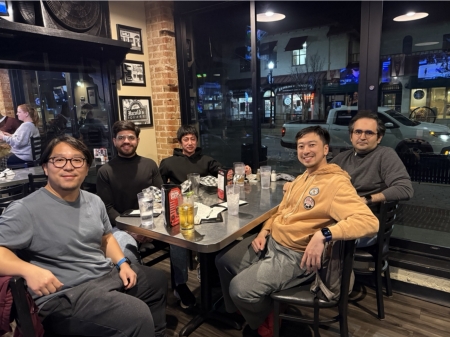
Title: "Aspects of Axion Kination"
Abstract: In this talk I will describe the Axion Kination mechanism and elaborate its associated phenomenology including baryogenesis, amplification of gravitational waves, imapct on CMB, matter power spectrum and Hubble tension and a novel way to produce axions through "acoustic misalignment mechanism".

Title: "Axion Misalignment and Domain Wall"
Abstract: In this talk, I will focus on the QCD axion misalignment mechanism. The first part will explore the light QCD axion, which addresses the strong CP problem while having a mass smaller than that of the conventional QCD axion. We introduce a mirror sector where the QCD theta angle is shifted by π compared to the Standard Model (SM) sector. This allows for the tuning of the mirror axion potential against the usual QCD axion potential. The explicit cosmological evolution of the axion field will also be discussed. In the second part, we turn to the conventional QCD axion, but with the addition of entropy injection that reheats the SM thermal bath to temperatures on the order of GeV. The axion then behaves like kination, potentially producing the correct dark matter relic abundance for a wide range of PQ scale. Furthermore, if the entropy injection occurs through a first-order phase transition, the stochastic nature of bubble nucleation could induce spatial fluctuations, leading to the formation of domain walls in the later stage.
Title: "New Quantum Materials for Dark Matter Detection"
Abstract: The direct detection of dark matter (DM) is critical for understanding its identity and properties—mass, spin, and couplings—and would also solve many fundamental questions in particle physics and cosmology, but its weak energy deposition is difficult to detect. Axions are a particularly well-motivated DM candidate, entering as a solution to the standard model’s strong charge-parity problem. Many experiments and proposals search various axion masses using the Primakoff effect (axion-photon conversion in a magnetic field), yet the meV (THz) regime remains poorly constrained. Dielectric and plasma haloscopes operating at low frequencies require smaller and more precise structures for the THz range, and material resonance detectors for higher frequencies suffer from a lack of well-studied low-loss THz materials, while mechanical tuning limits practicality in both. We propose the THz-Radiometer for AXions (T-RAX) using recent advancements in quantum structures and metamaterials with electromagnetically tunable plasma frequencies for meV DM detection. We simulate multiple quantum wells (MQWs) using experimentally-obtained electronic properties and show that resonant enhancements of the axion-induced electromagnetic signal may probe the QCD axion parameter space.

Title: "Echoes of Self-Interacting Dark Matter from Binary Black Hole Mergers"
Abstract: Dark matter (DM) environments around black holes (BHs) can influence their mergers through dynamical friction, causing gravitational wave (GW) dephasing during the inspiral phase. While this effect is well studied for collisionless dark matter (CDM), it remains unexplored for self-interacting dark matter (SIDM) due to the typically low DM density in SIDM halo cores. In this work, we show that SIDM models with a massive force mediator can support dense enough DM spikes, significantly affecting BH mergers and producing a distinct GW dephasing. Using N-body simulations, we analyze GW dephasing in binary BH inspirals within CDM and SIDM spikes. By tracking the binary's motion in different SIDM environments, we show that the Laser Interferometer Space Antenna (LISA) can distinguish DM profiles shaped by varying DM interaction strengths, revealing detailed properties of SIDM.
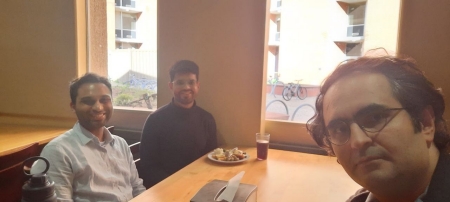
Title: "Electroweak Portal to the Hidden Valley"
Abstract: In this talk, we discuss the Standard Model (SM) electroweak (EW) sector as a portal to the hidden sector, with EW bosons serving as mediators. We propose several UV complete models of the EW portal and explore their prospects in EW precision tests (EWPT). A rich phenomenology emerges when the hidden sector admits a confining gauge interaction, leading to a family of dark hadrons such as dark pions and rhos. These dark hadrons are generally long-lived if their mass is of the GeV scale. The primary signal in collider physics will be dark showers from exotic boson decays, generating multiple long-lived particles. We will cover current LHC searches and other facilities, as well as the cosmological implications.
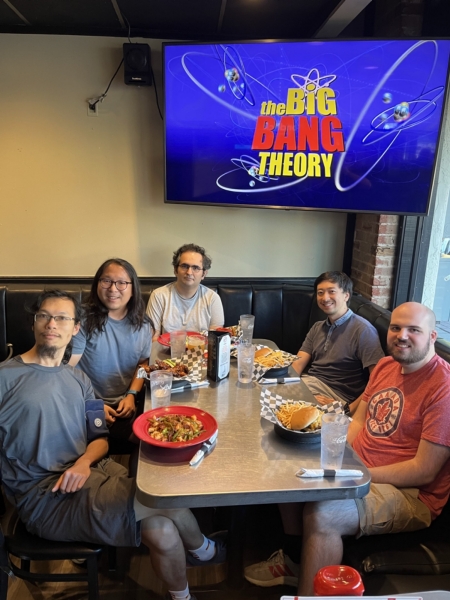
Title: ''New Patterns of Flavor for New Physics''
Abstract: The flavor sector of the Standard Model contains most of its free parameters, and exhibits an interesting structure that currently lacks a satisfactory explanation. Moreover, when moving beyond the Standard Model, assumptions about the flavor structure of new physics are crucial to make predictions and design searches. In this talk, I will review how the typical flavor ansätze for BSM physics come about, and motivate the need to move beyond these “minimal” ideas. I will then introduce several new, non-minimal ansatz for physics beyond the Standard Model: the Froggatt-Nielsen mechanism with “wrinkles”, and Spontaneous Flavor Violation. These ansätze lead to new correlations between experiments at low-, medium- and high-energies, and novel signatures at the LHC such as enhanced Higgs decays to strange quarks, some of which provide interesting targets for future experiments at the energy frontier.
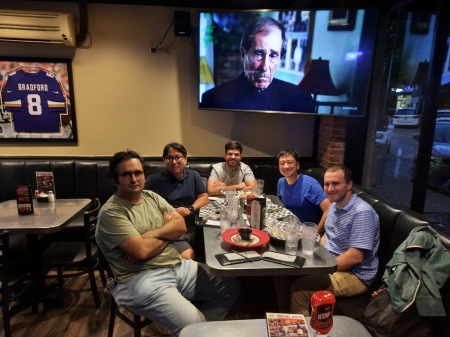
Title: "Exploring the dark side in the era of Roman"
Abstract: Gravitational microlensing is one of the most sensitive methods we have to search for macroscopic dark matter. NASA’s upcoming Roman Space Telescope will dramatically advance this search by performing a comprehensive microlensing survey of the Galactic Bulge at sensitivities orders of magnitude stronger than existing telescopes. Its unprecedented sensitivity will provide the opportunity to search for dark matter across a wide range of unexplored parameter space; however, it will also pose new challenges, including an irreducible astrophysical background in the form of free-floating planets. In this talk, I will discuss how population-level modeling can help mitigate this background and open the potential for Roman to make a first discovery of primordial black holes or other macroscopic dark matter in our galaxy.

Title: "Decoding the Mystery of Dark Matter with Celestial Objects"
Abstract: Dark Matter (DM) remains mysterious. Despite decades of experimental and theoretical efforts, its microscopic identity is still unknown to us. In this talk, I will walk you through how a variety of celestial objects can be utilised as powerful DM detectors. This astrophysical probe, complementary to the terrestrial and cosmological probes, covers a significant portion of the DM parameters (DM mass and its interaction strength with nucleons) which otherwise remains elusive.

Title: "Broadening direct searches for dark matter"
Abstract: The WIMP may not be dead, but its decline has opened a number of new frontiers in the search for dark matter, spanning a vast range of scales. This is problematic for traditional direct detection searches: decades of development have produced detectors that are extremely sensitive to weak-scale dark matter, but nearly blind to other important targets. The growing scope of our search thus calls for new experimental ideas. I will describe a new conceptual framework for the treatment of dark matter--electron interaction rates in which the capabilities of detectors are determined by their dielectric properties. This language makes it possible to leverage the complicated condensed matter physics of detector materials to probe dark matter at masses several orders of magnitude below existing bounds. This novel formalism is already enabling new approaches to the detection of light dark matter, and I will share recent results including new constraints on sub-MeV dark matter and prospects for directional sensitivity with off-the-shelf dielectric targets. The future prospects promise to transform direct detection from a surgical instrument at the weak scale to a robust tool in the search for new physics across the scales.

Title: "Probing ν-physics using cosmology"
Abstract: In this talk, I will discuss new probes of neutrino/non-photon interactions using cosmology, specifically the cosmic microwave background (CMB) data. A phase shift in the acoustic oscillations of CMB spectra is a characteristic signature for the presence of neutrinos (non-photon radiation) propagating differently compared to photons. Focusing on dark matter neutrino interaction and neutrino self-interaction, we will show how these interactions imprint changes in the acoustic phase shift and be probed using data. In the case of dark matter-neutrino interaction, the scattering between dark matter and neutrinos further amplifies the phase shift due to `dark matter' loading. For neutrino self-interaction, we find that the CMB dataset favors strong self-interaction if only one or two of the three active neutrino flavors interact relative to the flavor-universal scenario. Flavor non-universal interaction also helps to avoid the stringent constraints on new secret interactions among electron and muon neutrinos from several laboratory experiments. Finally, I will discuss how a tower of neutrino states, that appear in BSM scenarios, can be probed using cosmology. I will discuss the relevance of the tower of neutrino states in light of the latest bound on neutrino mass from cosmological data.
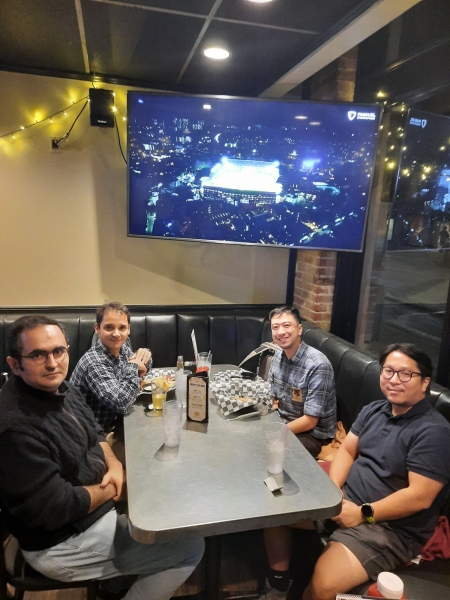
Title: "Recurrent Axinovae and their Cosmological Constraints"
Abstract: Axion-like dark matter whose symmetry breaking occurs after the end of inflation predicts enhanced primordial density fluctuations at small scales. This leads to dense axion minihalos (or miniclusters) forming early in the history of the Universe. Condensation of axions in the minihalos leads to the formation and subsequent growth of axion stars at the cores of these halos. If, like the QCD axion, the axion-like particle has attractive self-interactions there is a maximal mass for these stars, above which the star rapidly shrinks and converts an O(1) fraction of its mass into unbound relativistic axions. This process would leave a similar (although in principle distinct) signature in cosmological observables as a decaying dark matter fraction, and thus is strongly constrained. We place new limits on the properties of axion-like particles that are independent of their non-gravitational couplings to the standard model. I will also introduce possible photon signatures from axinovae.

Title: "Progress in the Direct Detection of Light Dark Matter"
Abstract: In this talk, I’ll summarize the status of dark matter direct detection as it stands today and where it’s headed in the next ~10 years. While the experimental program to directly detect light dark matter is proceeding full steam ahead, the theoretical one is at a crossroads. I will review the status of both, highlighting the obstacles theories of sub-GeV dark matter must overcome. I will detail three such benchmarks direct detection experiments are exploring, focusing in particular on our latest “Dark Sink Dark Matter” which has immediate implications for SENSEI and other ongoing experiments.

Title: Reflections on the Dark Matter/Matter Coincidence
Abstract: The fact that the cosmic abundances of baryonic and dark matter are so similar, despite their very different astrophysical behavior, is taken as a serious hint from Nature. We propose a rich dark sector parallel in structure to that of the standard model, and related to it via a Z2 exchange symmetry. A WIMP baryogenesis mechanism is mirrored in the dark sector; small breakings in the Z2 symmetry result in the dark matter being made of dark neutrons, which are the lightest dark baryons. An extra-dimensional realization of our model in the far UV naturally explains the hierarchical couplings of both sectors as well as the requisite Z2-breakings. We carefully trace the cosmic history of both sectors, paying particular attention to serious pitfalls inadequately considered in previous literature, such as light relics and dark big bang nucleosynthesis. Finally, we briefly discuss potential experimental signatures.
Title: Fast and Differentiable Big Bang Nucleosynthesis
Abstract: The process of Big Bang Nucleosynthesis (BBN) is a crucial test of cosmology. In this talk, I will describe a new code for predicting the primordial elemental abundance due to BBN. This code takes advantage of JAX, a machine learning framework, to enable fast and differentiable predictions of elemental abundances. This allows us to put BBN calculations on the same level of rigor and ease-of-use as cosmic microwave background analyses, taking nuclear rate uncertainties fully into account. The differentiable nature of the code will also allow the use of more sophisticated and efficient methods of parameter estimation beyond e.g. traditional MCMC techniques.
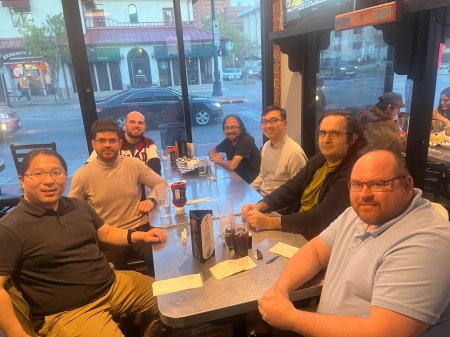
Title: Cosmological collider physics beyond the Hubble scale
Abstract: Cosmological production and propagation of heavy particles during inflation can leave a distinctive signature in the non-Gaussianity of primordial density fluctuations. This presents a unique opportunity for the direct detection of particles as heavy as the inflationary Hubble scale (H ≲ 1013 GeV) through precision cosmology. However, the window of observability is often restricted to masses in a small region around H. In this talk, I will discuss a mechanism (dubbed “chemical potential”) for heavy complex scalar fields that can extend this window up to 60H. The mechanism utilizes the large kinetic energy of the inflaton to enhance particle production, and can impart potentially observable non-gaussianity, fNL~ O(0.01-10).
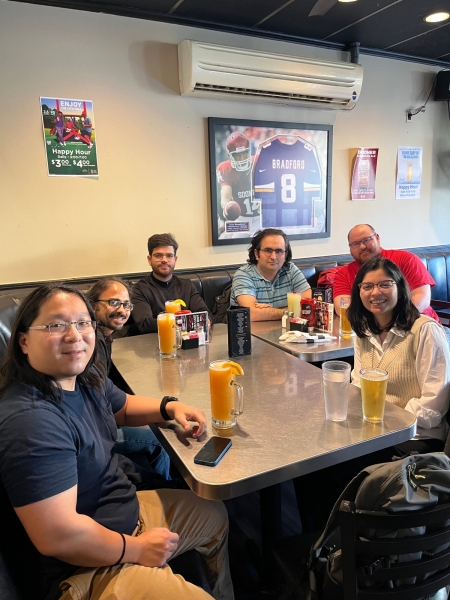
Title: Minimally beyond the Standard Model
Abstract: Many new physics models that address one or more shortcomings of the SM predict additional particle content beyond the SM. I will discuss a few minimal extensions to the SM fermion and scalar sectors. First, I will argue that the new fermions must necessarily be vectorlike under the SM gauge group, and consider the prospects for one of the simplest non-trivial fermionic extension: weak isosinglet charged vectorlike leptons. I will show how an electron-positron collider, including a near future Higgs/top factory, can act as a discovery machine for these particles that seem to pose a much more difficult challenge at (future) hadron colliders. Then, I will consider the possibility of the “depleted Higgs boson” with a universal coupling suppression and an invisible decay width. One or both of these depletion factors can naturally arise in a large class of theories, by way of additional singlet scalars that mix with the Higgs boson. I will discuss the present status of the depleted Higgs boson and argue that in many cases the precision study of the Higgs boson is more powerful than searches for the extra scalar states, given the slate of next-generation experiments that are on the horizon. Finally, many researchers think that LHC limits on superpartner masses negatively affect the viability of supersymmetric gauge coupling unification. I will show through a high-precision analysis that that is not the case, even for standard minimal models of supersymmetry. I will argue that precision unification together with the observed Higgs mass constraint favors the superpartner masses that are in the range of several TeV and beyond. Furthermore, I will highlight regions of parameter space where a Higgsino or a wino can reproduce the thermal dark matter abundance.

Title: "Recent developments in muon g-2"
Title: "Pre-BBN Cosmology and Gravitational Waves"
Title: "Stasis in an Expanding Universe: Overview, Concrete Realizations, and Observational Consequences"
Abstract: Within the standard cosmology --- and indeed even within most commonly studied modified cosmologies --- the history of the universe effectively consists of a sequence of single-component epochs with only brief transition periods between them. However, many extensions of the Standard Model predict the existence of towers of unstable states. Such towers often lead to a form of "cosmic stasis" in the early universe wherein the relative cosmological abundances of different energy components remain unchanged over an extended period, even as the universe expands. The emergence of stasis is not a consequence of fine-tuning in cosmologies of this sort; rather, stasis turns out to be a global attractor toward which the universe naturally evolves for a broad range of initial conditions. In this talk, I shall review the general conditions under which stasis emerges in such scenarios and discuss particular realizations of this phenomenon, such as those involving towers of Kaluza-Klein states or populations of primordial black holes with an extended mass spectra. I shall also examine some of the potential implications of a stasis epoch for the evolution of primordial density perturbations and the growth of structure, for the primordial gravitational-wave background, for dark-matter production, and even for the age of the universe.

Title: "The Elusive Universe: Probing Dark Matter, Neutrinos, and Fifth Froces with OSIRIS-REx Space Mission and Quantum Sensors."
Abstract: We explore the "Elusive Universe," where dark matter, neutrinos, and gravity sculpt our observed nature, leaving many open questions. Our work focuses on opening up new directions to answer these puzzles. I will present two approaches:
1) Using precision astrometry and space mission data to study general relativity, dark matter, cosmic neutrinos, and fifth forces [1, 2, 3].
2) Utilizing quantum sensors mounted on spacecraft to study ultralight dark matter gravitationally bound to the sun, inspired by Deep Space Atomic Clocks (DSACs) and Parker Solar Probe [4].
These are highly interdisciplinary efforts, highlighted by the DOE Office of Science. The approaches can also be applied to studying interstellar objects, primordial black holes, Planet Nine, topological defects, dark nuggets, and strongly interacting dark matter.
[1] Tsai et al., https://arxiv.org/abs/2309.13106 (2023, OSIRIS-REx result)
[2] Tsai et al., https://arxiv.org/abs/2210.03749 (2022)
[3] Tsai et al., https://arxiv.org/abs/2107.04038, JCAP (2023)
[4] Tsai et al., https://arxiv.org/abs/2112.07674, Nature Astronomy volume 7, pages 113–121 (2022)
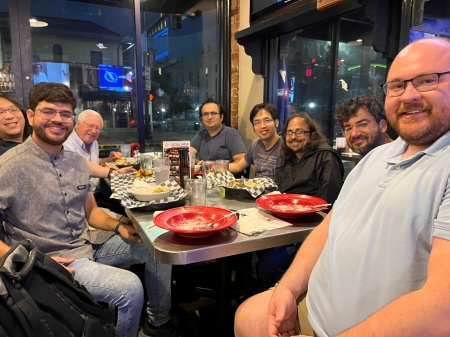
Title: "Implications of Natural Supersymmetry for Heavy SUSY Particle Discovery at the High-Luminosity LHC"
Abstract: We explore the ramifications of natural supersymmetry (natSUSY) frameworks for upcoming experiments at the high-luminosity Large Hadron Collider (HL-LHC). Specifically, we scrutinize the production and subsequent decay modes of heavy SUSY Higgs bosons, both neutral and charged, as well as stop pairs and electroweakino pairs, within the context of natSUSY. The study highlights the importance of decay hierarchy for accurate interpretation of LHC data. A detailed examination reveals that the dominant decay modes of heavy winos to Standard Model bosons—W, Z, or h—alongside light higgsinos with weak-scale masses, emerge as a unique signature of the natSUSY paradigm. The investigation delineates both the discovery and exclusion limits for these heavy SUSY particles, thereby offering critical insights into the viability and constraints of natural SUSY models in the forthcoming LHC runs.
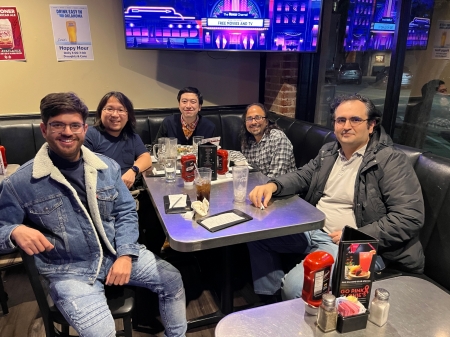
Title: "Dark Solar Wind"
Abstract: We study the solar emission of light dark sector particles that self-interact strongly enough to self-thermalize. The resulting outflow behaves like a fluid that accelerates under its own thermal pressure to highly relativistic bulk velocities in the solar system. Compared to the ordinary noninteracting scenario, the local outflow has at least ~10^3 higher number density and correspondingly at least ∼10^3 lower average energy per particle. We show how this generic phenomenon arises in a dark sector composed of millicharged particles strongly self-interacting via a dark photon. The millicharged plasma wind emerging in this model has novel yet predictive signatures that encourage new experimental directions. This phenomenon demonstrates how a small step away from the simplest models can lead to radically different outcomes and thus motivates a broader search for dark sector particles.

Title: Finite bubble statistics constrain late cosmological phase transitions
Abstract: Super-horizon (iso)curvature perturbations can arise from statistical fluctuations of bubbles in a first-order phase transition (PT). The perturbations follow a generic power-law scaling in PT parameters. Even if the PT occurs in a secluded dark sector, the resulting curvature perturbation is constrained by cosmological data. I will present existing and future bounds on the dark radiation energy released associated with a dark-sector PT. For PTs that happen between photon temperatures from eV to keV, this new constraint already surpasses the standard ∆Neff bound. Future constraints on the primordial curvature perturbation may extend the bound to the 100 MeV scale.
